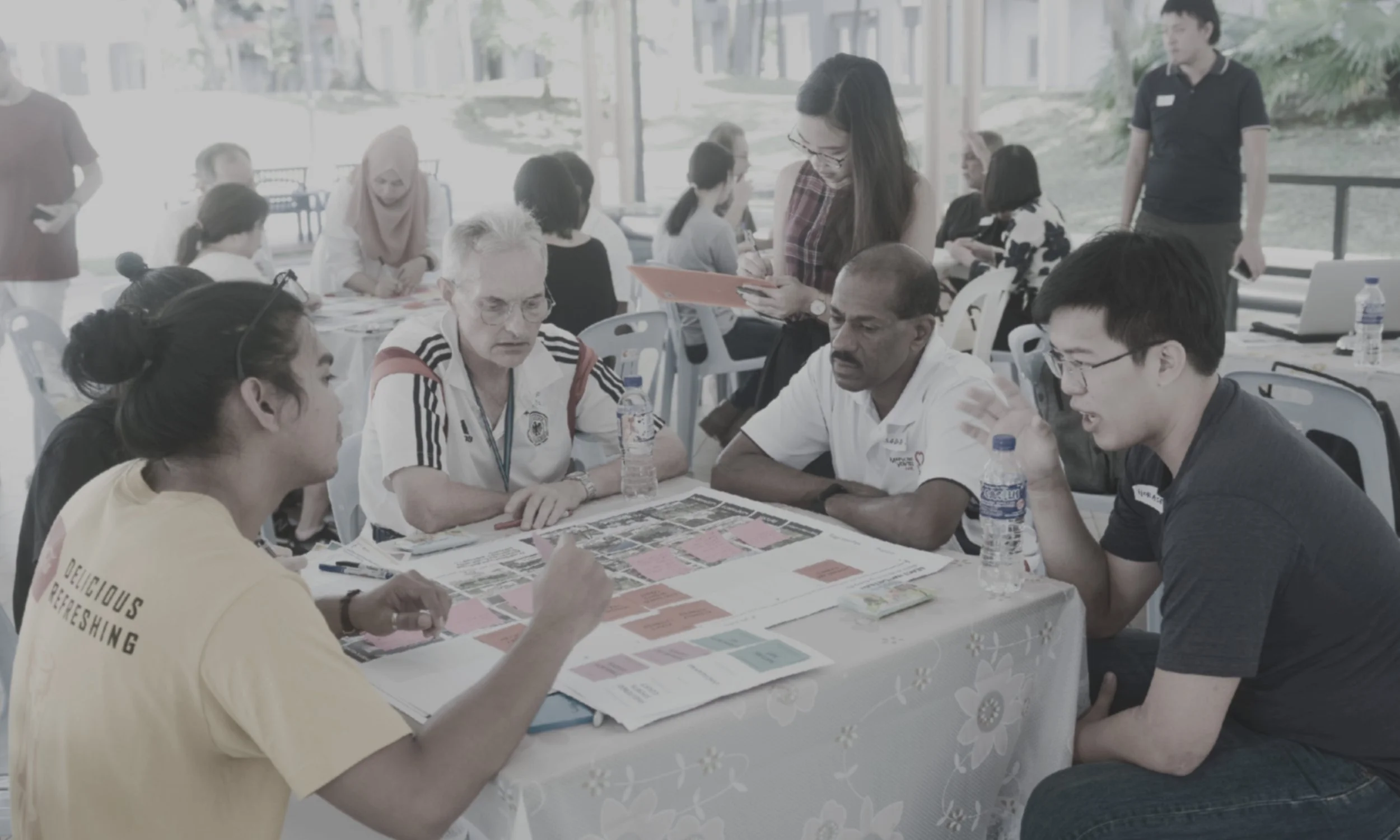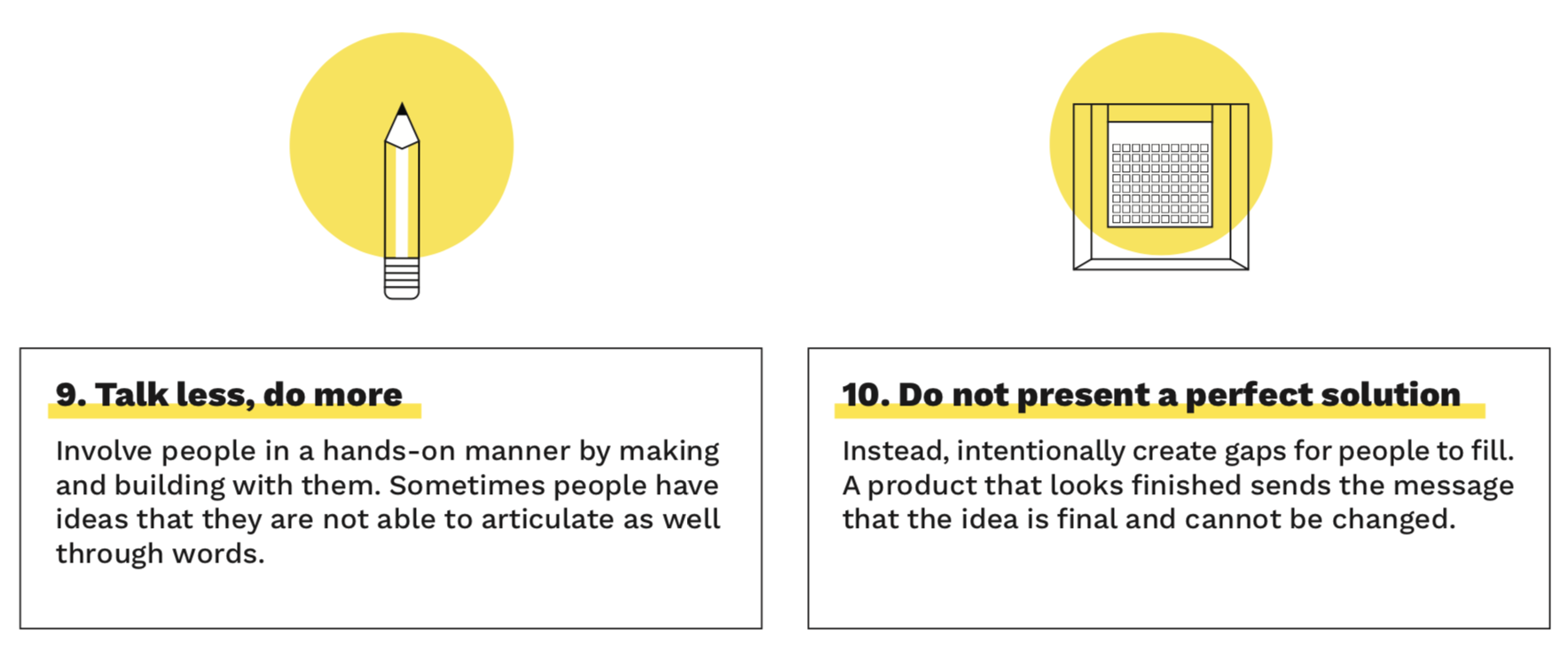“Participatory Design is not only
an approach to design…
but most importantly
a design attitude.”
What is
Participatory
Design?
Participatory Design (PD) is a creative approach to engaging and co-creating with communities to address local issues.
The PD Approach in Singapore is pioneered by local design organisation, Participate in Design (P!D).
Traditional design projects typically include the paying client and professionals within similar and related industries; in participatory design, members of the wider community — from the users who are directly affected by the design, to the local business owners who may be peripheral to it — are also recognised as legitimate stakeholders with the ability to impact the project.
The extent of their involvement can range from being passively informed of a project’s development, to actively sharing roles and responsibilities in decision making. While there may be times when informing is a necessary part of the process, we believe that real impact is often made when we intentionally build up a person’s capacity to contribute at higher levels.
Why
Participatory
Design?
Here are five ways in which a participatory design (PD)
approach could benefit you and the community you work with.
01. Participation can reduce the risk of failure and consequently, cost.
02. Participation can build ownership of the outcome.
03. Participation can boost confidence and self-reliance.
04. Participation can enable realistic expectations to form and lower resistance to change.
05. Participation can foster stronger bonds, and in turn, greater community involvement.
Our Design Approach
4 Steps to
Designing with People
and not just for them.
Our Areas
of Impact
Our work results in concrete community benefit and empowerment.
Our community projects improves and enrich the following issues:
01. Neighbourhood Planning and Strategic Masterplan
02. Ageing in Place with Seniors
03. Public Space Design
04. Mobility in the City
05. Climate Change Resilience
06. Activation of Under-Utilised Spaces
07. Health and Active Living
08. Arts in Public Spaces
09. Empowerment of Residents, Seniors, Children and Youth
10. Participatory Budgeting










